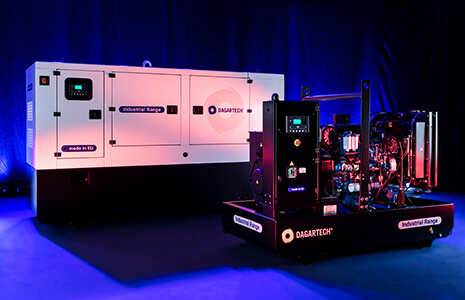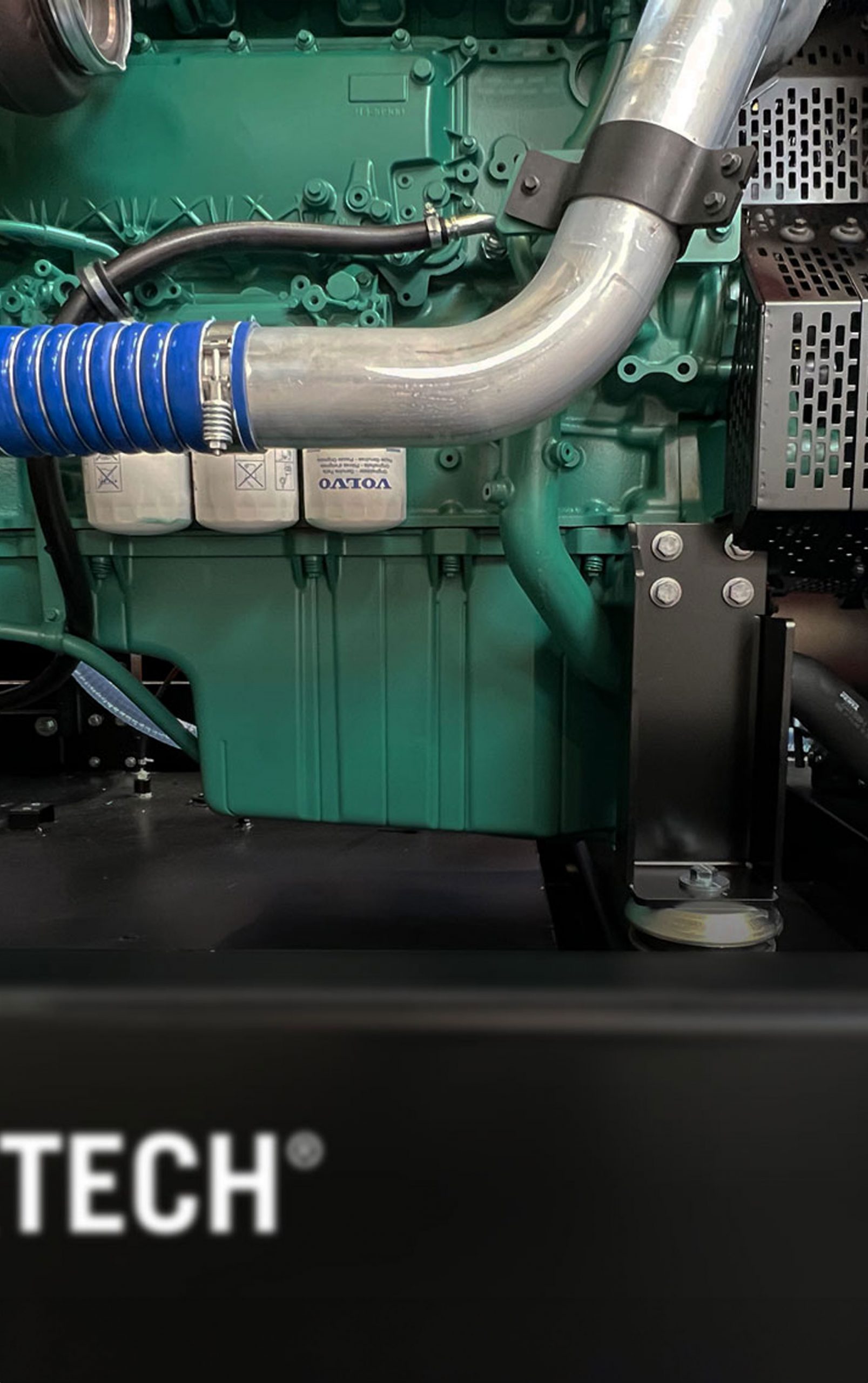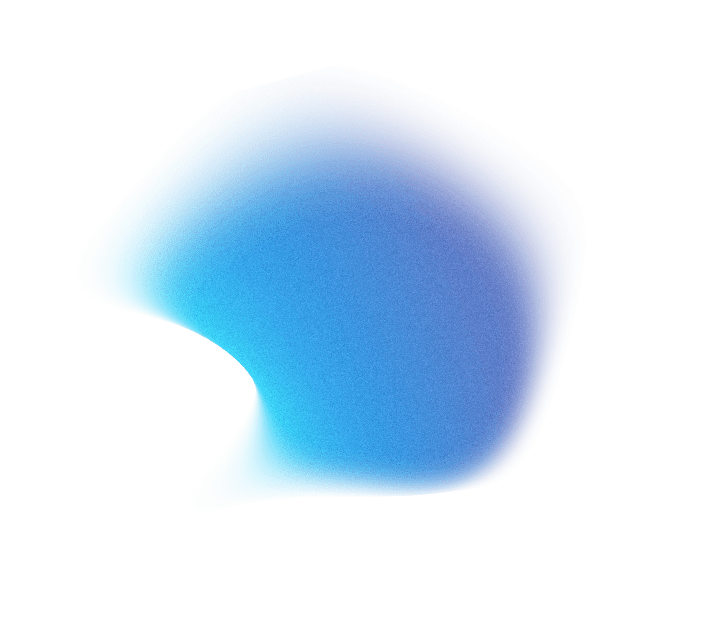- How to avoid vibrations in generator sets is a key concern for professionals in the energy sector. The use of different anti-vibration systems in generator units is essential to mitigate the effects caused by their operation.
- Minimising the vibrations of the generator unit will lead to a longer lifespan of the generator and a significant reduction in noise.
Vibrations and the resulting noise produced by them are aspects associated with the nature of the generator unit itself when it is operating. Nevertheless, we can and must work to minimise them, as beyond noise, their presence will also affect the lifespan on the generator. Vibrations in the generator unit will generate contacts and instability in the device, causing fatigue in its components; these are especially significant in the engine-alternator block and in the structural elements to which this block is attached.
Considering all of the above, how can we address vibrations and their consequences?
Good planning, better design and use of anti-vibration supports
The first step for minimising vibrations is to consider the essential aspects that cause their appearance.
The coupling of the engine-alternator assembly is one of the most important, as this is where we find the focus of the generator’s vibration. The engine and the alternator must be well aligned to minimise vibrations during operation. However, it will not be enough to eliminate them. We will need to have anti-vibration systems. Their use and installation in a generator is not an “automatic” procedure. We must carry out a prior analysis which responds, in a simplified way, to achieving the following steps:
- Calculation of the total weight of the generator set.
- Calculation of its centre of gravity.
- Selection of the most suitable anti-vibration elements based on the equipment and the nature of the application.
- Study of the position of the supports in accordance with the centre of gravity of the generator set.
- Checking the percentage load supported by each anti-vibration element.
- Study of the excitation frequency of the system for placing anti-vibration supports that promote a lower frequency transmissibility curve.
Types and location of anti-vibration elements a generator unit
Anti-vibration supports between the engine-alternator block and the chassis
The greatest concentration of vibrations is located in the engine-alternator block and the elements that attach these components to the chassis. Between these components, we will find anti-vibration supports that work to cushion vibrations and their effects. Depending on the power of the generator set and the specific application for which a response must be given, we can find different solutions:
- Hood anti-vibration supports
These anti-vibration elements work the elastomer in shear-compression. They offer an especially satisfactory performance in applications where the isolation of vibrations is a priority. For example, mobile generator sets that are continuously subject to impacts or unevenness. There are multiple types within this category. The selection of one or another will depend on the tolerance of the vibration in each case.
The anti-vibration supports are those that we include in our generators, unless the client expressly requests the inclusion of cylindrical supports.
- Cylindrical anti-vibration supports
These are made up of a rubber block with two parallel metallic frames. Depending on their size, they also have greater or lesser elasticity. Low power generator sets and those with fewer features can be equipped with this type of anti-vibration element, although they do not offer the same performance as the hood elements.
- Anti-seismic springs
This type of anti-vibration support is made up of a mechanical anchoring system that ensures the stability of the generator set and provides high reliability for the isolation of low frequency vibrations. As their name indicates, this type of spring is especially suitable for eliminating the vibrations of rotating elements in seismic environments, as well as in any circumstances in which there are frequent sudden movements on all axes of movement. At Dagartech we incorporate them in generators whose applications have zero tolerance to vibrations and where the generator will constantly face accelerations and braking or equivalent.
Anti-vibration supports between the chassis and the ground
The best results for addressing vibrations are obtained when in addition to anti-vibration elements between the engine-alternator and bench, we include anti-vibration elements between the bench and the ground. These are called dual mass isolation systems.
In these systems, good design and dimensioning is especially important, so that the stability of the generator is not compromised. Carrying out calculations with multiple degrees of freedom will allow us to achieve a better result.
Supports for levelling the generator
In certain circumstances, the use of levelling elements is required for the generator set. These are commonly known as levelling silentblocks. Although they do not absorb vibrations, they do allow the generator to be level, in case of irregularities on the ground or structural elements.
About Dagartech
Dagartech is a Spanish company specialised in offering customised energy solutions. In this way, the company stands out for promoting unique projects that demand the maximum level of customisation, as well as designing, manufacturing and commercialising a large number of standard generator set products with powers ranging from 3 kVA to 2,000 kVA.
Dagartech generator sets are always developed considering the target application, the machine’s circumstances of use, the latest advances of the power generation market and the demands of clients. Therefore, with a clear orientation toward the needs of our clients, Dagartech has established itself as one of the main manufacturers of the Spanish market. The company currently has a stable presence in over 30 countries, with exports making up the main volume of its business.
The company has committed to innovation and has built up a human team with extensive experience in the energy generation sector. Quality and excellence form part of its present and pave the way for its future, which involves the company being certified on compliance with the requirements of the ISO 9001:2015 standard.



